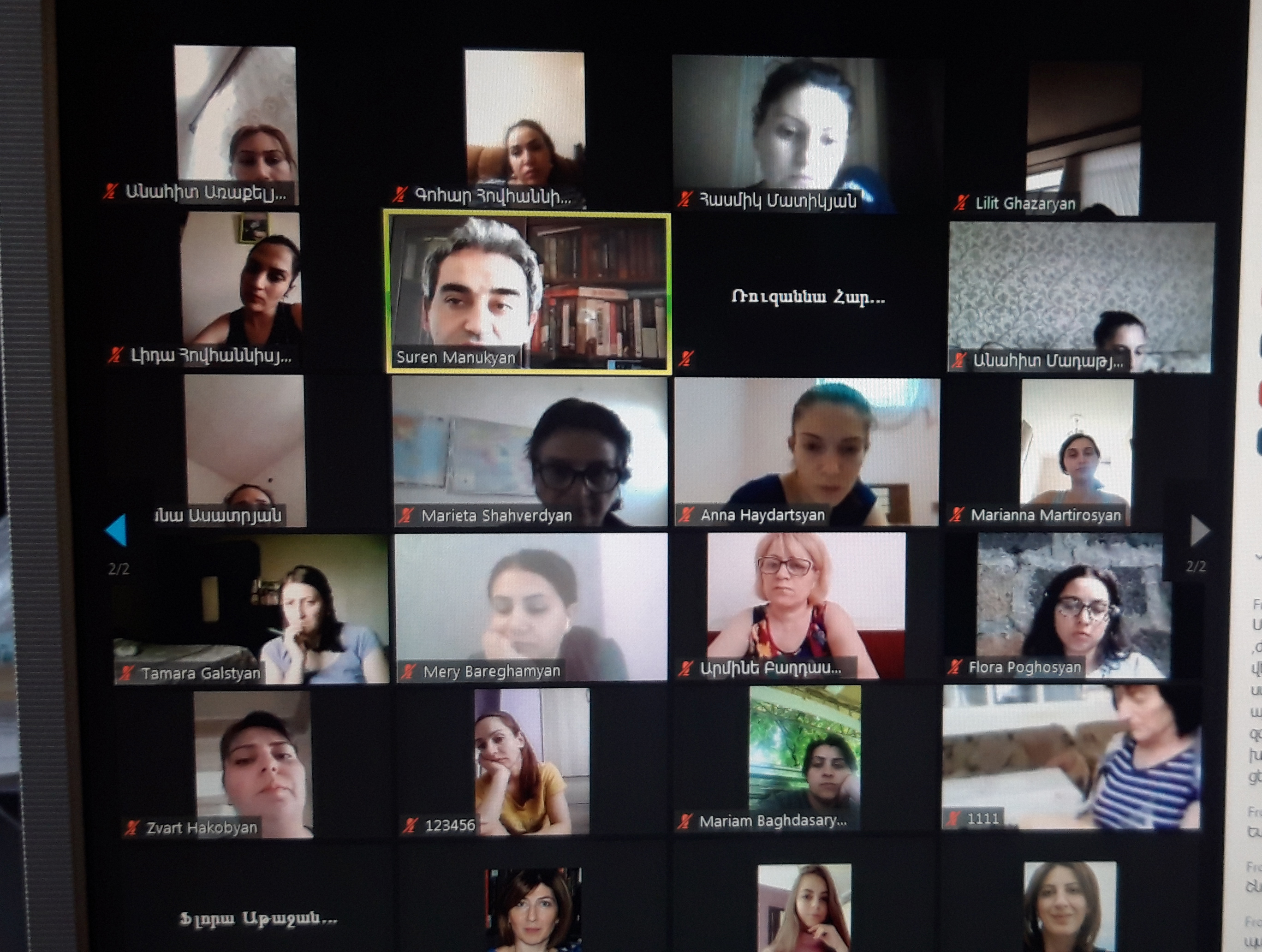
Summer school “Teaching the Armenian Genocide” was held at the Armenian Genocide Museum-Institute on 28-30 July. Due to the state of emergency in Armenia, the annual educational program was held online, though the methodology was the same: to train teachers, to deepen the knowledge on the history of the Armenian Genocide, taking into consideration the psychological peculiarities of the topic and current developments in genocide studies. The summer school was attended by 30 Armenian history teachers of elementary and high school; from Gegharkunik, Kotayk, Shirak, Ararat, Armavir, and Aragatsotn regions of the Republic of Armenia. The lectures were launched by the welcoming speech of AGMI Director Ph.D. in History Harutyun Marutyan.
The first speaker Ph.D. in Armenian language and literature Rubina Pirumyan made some methodological observations on teaching the topic at school. Afterward, AGMI Deputy Director Edita Gzoyan delivered a report titled “Genocide as an international crime: some legal issues”. Within the framework of the lecture of the same day, Head of the Comparative Genocide Department of AGMI, Ph.D. Suren Manukyan, Head of the Victims’ Documentation and Data Collection Department, Ph.D. Shushan Khachatryan and Researcher of the Department of Educational Programs Regina Galustyan presented the ideological context of the implementation of the Armenian Genocide, the Young Turks’ nationalism, propaganda, expanded on the mechanisms of the crime, emphasizing their religious content.
The second day of the summer school started with the lecture “Germany and the Armenian Genocide: the triangle of Reality, Myths, Humanity”, which was delivered by AGMI Senior researcher at Victims’ Documentation and Data Collection Department, Ph.D. Aram Mirzoyan. Then, AGMI Scientific Secretary, Ph.D. Narine Margaryan presented the fate of the Armenian children during the genocide, state policy of Islamization, and Turkification, as well as the efforts of Armenian and international humanitarian organizations to return them to the Armenian identity. After the break, the lecture was continued by Seda Parsamyan, Head of the Museum Exhibition Organization Department, and Senior Researcher of the same department, Ph.D. Tehmine Martoyan. Martoyan spoke about an episode of the Armenian Genocide, the massacre of Armenians in Smyrna, and the organized arson of the city. Parsamayan’s lecture was on cultural genocide. She presented the process of the formulation of the cultural genocide as an international crime, its prehistory, and the intentional policy of the Young Turk and later Kemalist governments to eradicate the Armenian cultural heritage.
On the third day of the summer school, AGMI Head of the Department of Educational Programs Kristine Najaryan showed the teachers the importance of individual stories and videos in teaching the Armenian Genocide and stressed their role in making the material achievable to the students. Psychologist Armine Vahanyan made some socio-psychological observations on the teaching of the Armenian Genocide and introduced to the teachers some mechanisms that would allow them to adapt the presentation of historical events to the age and psychological peculiarities of the students. Researcher of the Department of Memoirs, Documents and Press Studies, Ph.D. Elina Mirzoyan spoke on Hrant Dink’s life, activities, making some emphases on the content of “Agos” newspaper, as well as the denial of the Armenian Genocide, and Dink’s role in presenting the issue to Turkish society. AGMI Director Harutyun Marutyan concluded the summer school with a lecture entitled “How to Remember the Genocide?” He stressed the importance of including the history of the Armenian Genocide at school as a separate subject and publishing the textbook not only to restore historical justice but also to educate the student as an Armenian and as a responsible citizen. In general, the political, ideological, historical, legal, and psychological aspects of the Armenian Genocide were discussed during the training.
Teachers’ remarks and suggestions will be taken into account for course improvement and for providing more tangible support to teachers. At the end of the educational program, teachers were provided with certificates. The parties expressed hope that the joint work will be continuous, and the connection with the museum-institute will be frequent. AGMI expressed readiness to involve the graduate teachers in further educational and cultural programs.





